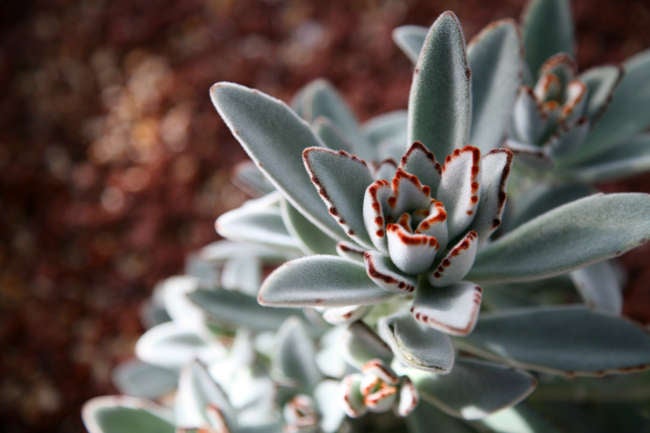

We may earn revenue from the products available on this page and participate in affiliate programs. Learn More ›
Home Advice You Can Trust
Tips, tricks & ideas for a better home and yard, delivered to your inbox daily.
By signing up you agree to our Terms of Service and Privacy Policy.
Dish It Up!
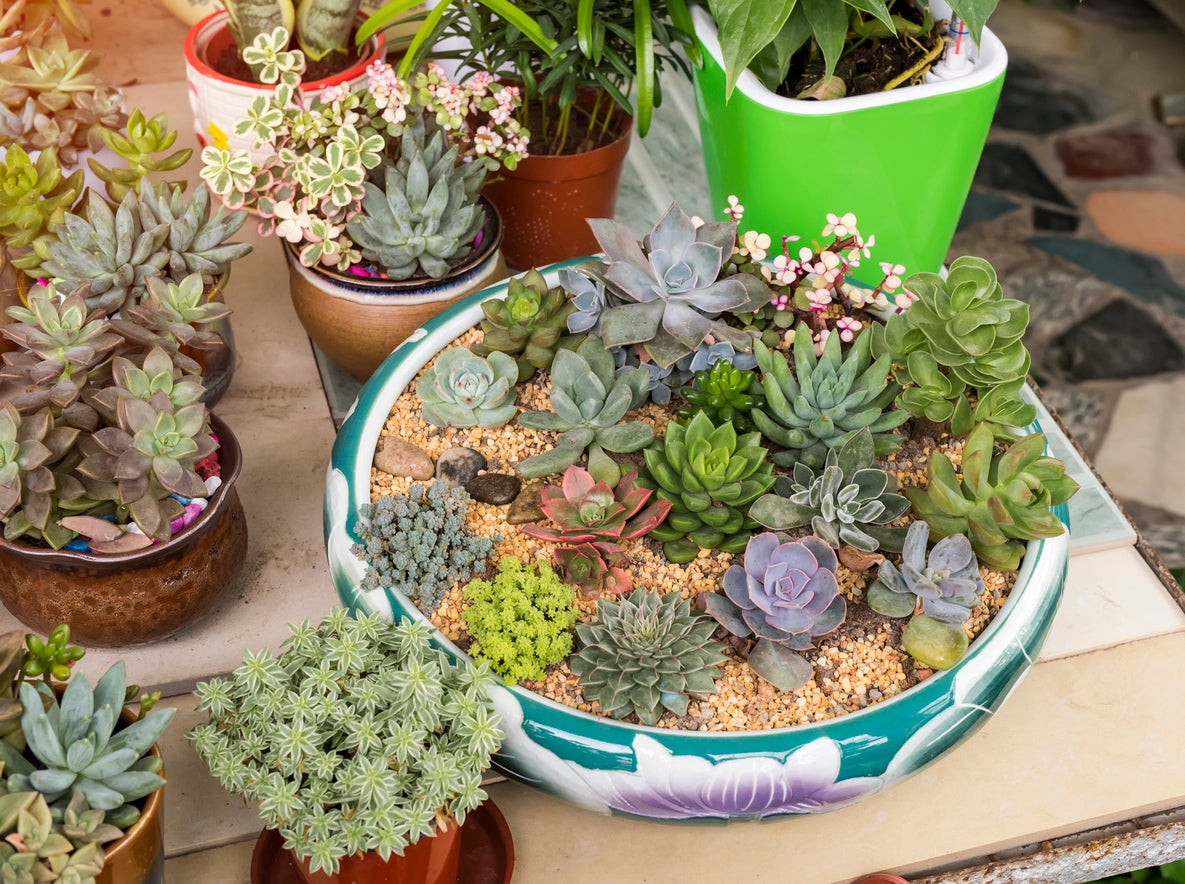
Why settle for solo potted plants when you can create an entire Eden in a single container! Known as dish gardens, these gorgeous living arrangements are especially popular with folks who have limited space, as they look spectacular on a balcony or porch and equally so on a plant stand or other surface inside the home. A dish garden can flourish even in a fairly shallow container (at least 2 inches deep) as long as it has good drainage. The secret to good dish garden design is to gather a variety of plants that complement each other visually and have similar needs for light, water, and soil. Keep reading for the dish on 15 plants you can combine for a kaleidoscopic, visually arresting display.
Include a Lucky Jade Plant.
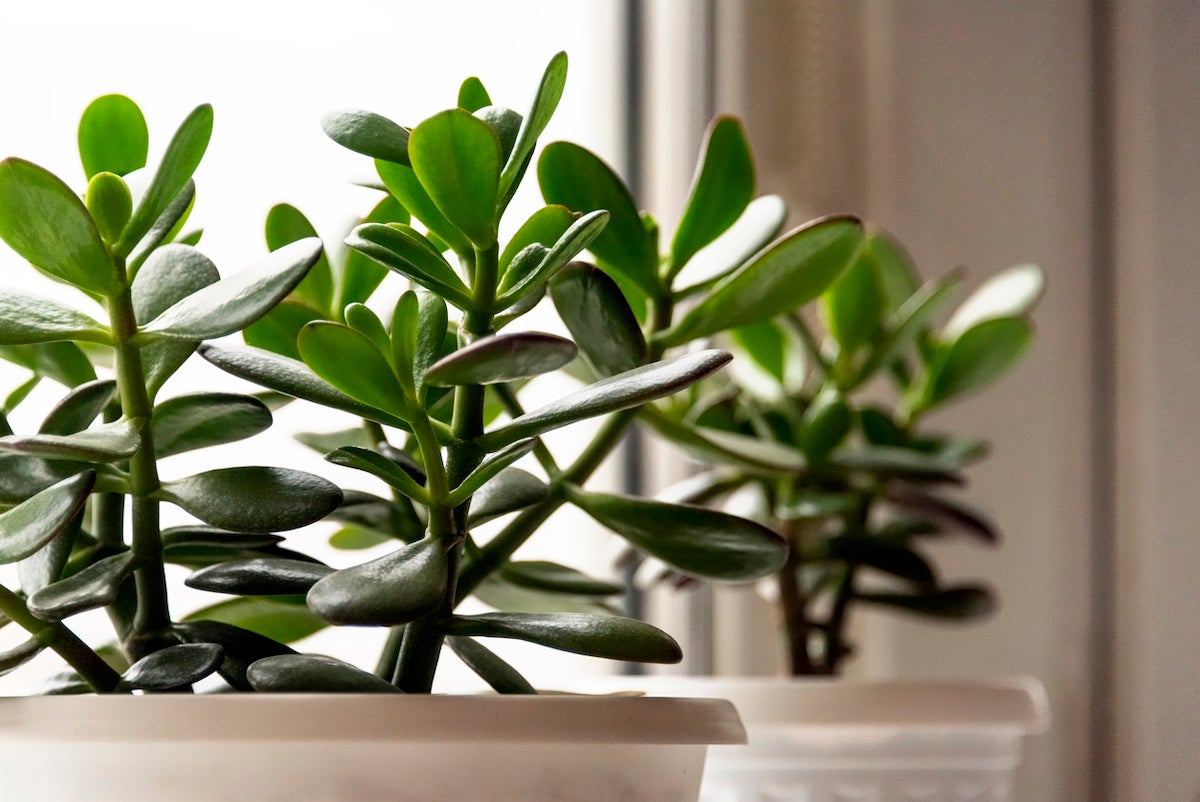
The gem of your dish garden may just be the jade plant (Crassula ovata), with its full, fleshy, rounded leaves. Though fairly low maintenance, jade does like full sun and can be a bit of a Goldilocks when it comes to water—neither too much (a risk of root rot) nor too little. Water only when soil is dry to the touch and the jade plant should not only thrive, but it just might bring you good fortune as well!
Related: 14 of the Fastest-Growing Houseplants for a Nearly Instant Indoor Garden
Let African Violets Bloom.
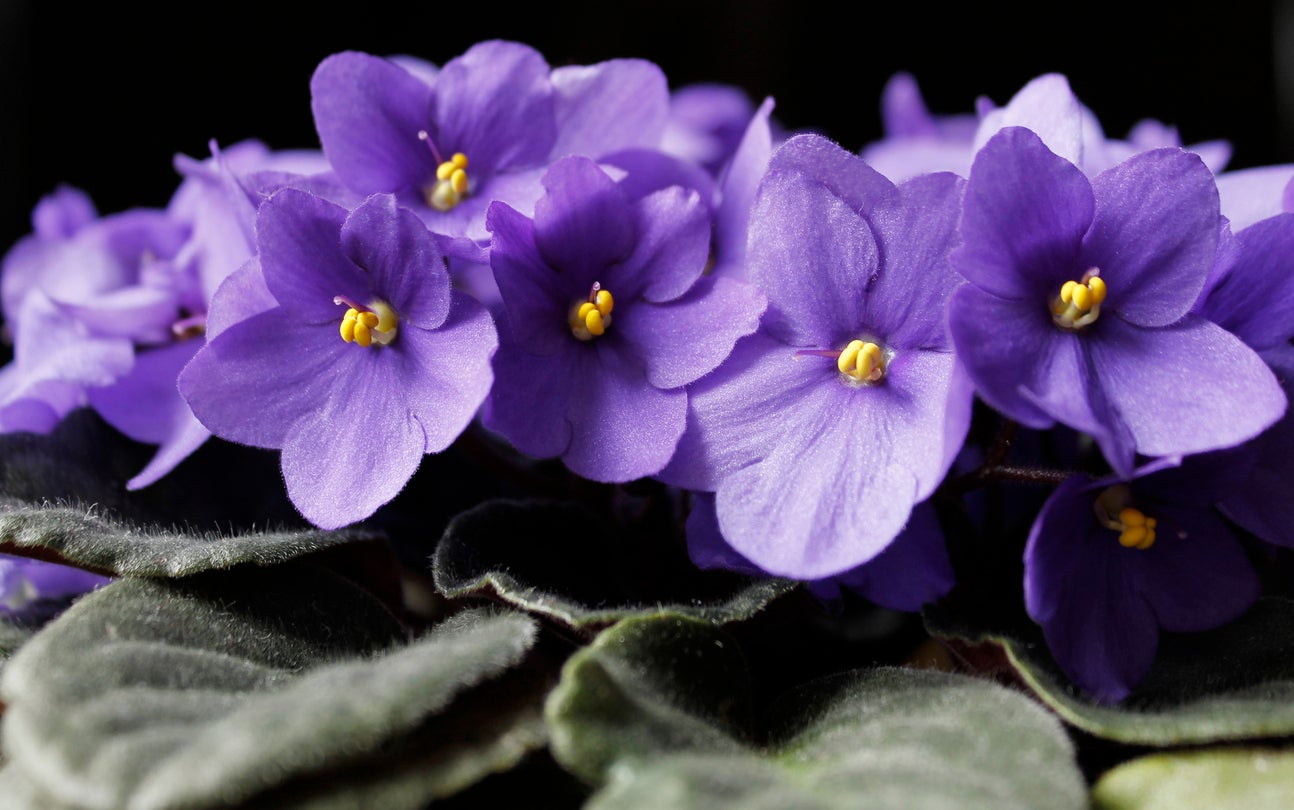
To bring a rich dose of color to your dish garden, consider these flowering lovelies. The African violet (Saintpaulia) can be fussy, so start with the right soil. Specialty blends are available for African violets, or mix your own with equal parts perlite, vermiculite, and peat moss. They like medium to bright light, and it’s wise to turn the plants regularly for optimal exposure. Pro tip: Avoid splashing blooms when watering.
Center a Snake Plant.
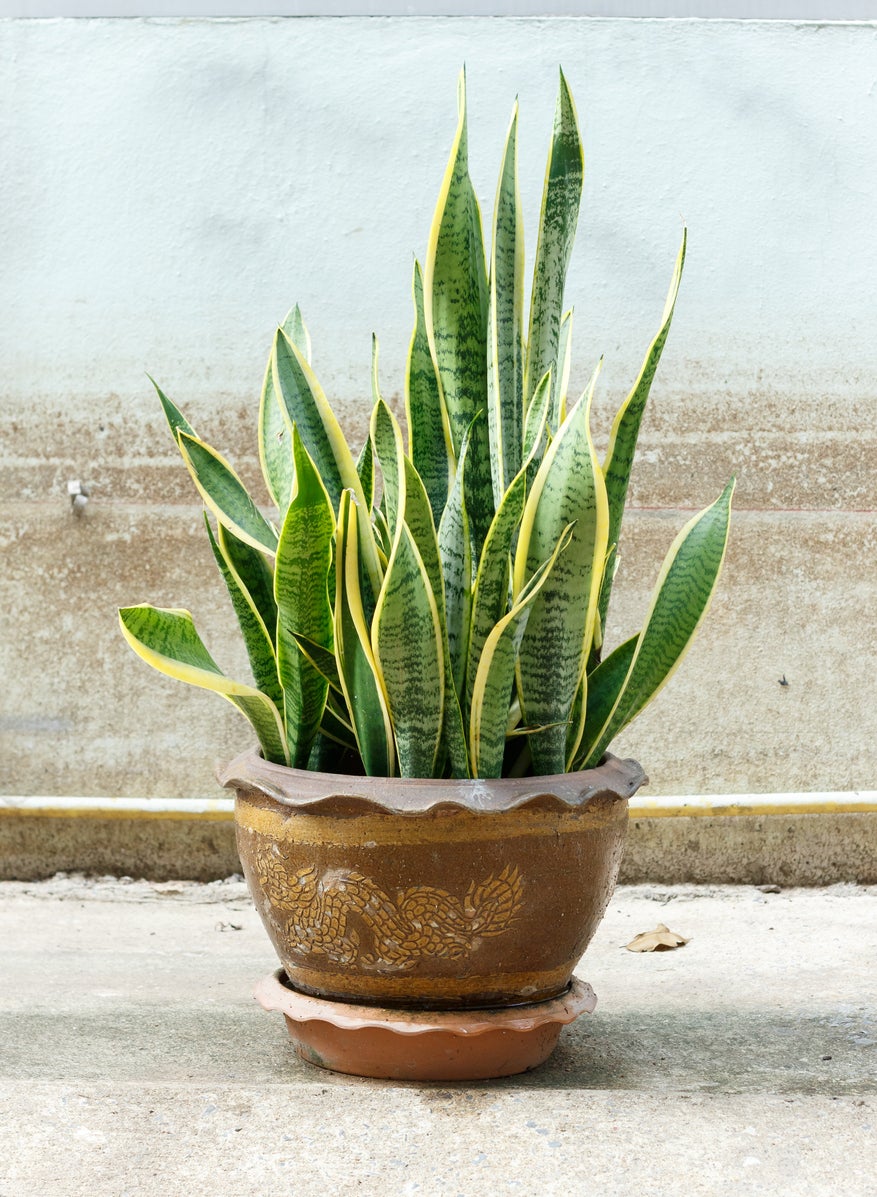
Tall, striped, and handsome, the snake plant (Dracaena trifasciata) is a perfect choice for the middle of a garden dish when surrounded by increasingly lower-growing varieties. It’s a hardy choice as well, being drought-tolerant, disease-resistant, and able to thrive in low light. Another plus: Snake plants may help remove toxins from the air.
Cull a Cache of Cacti.
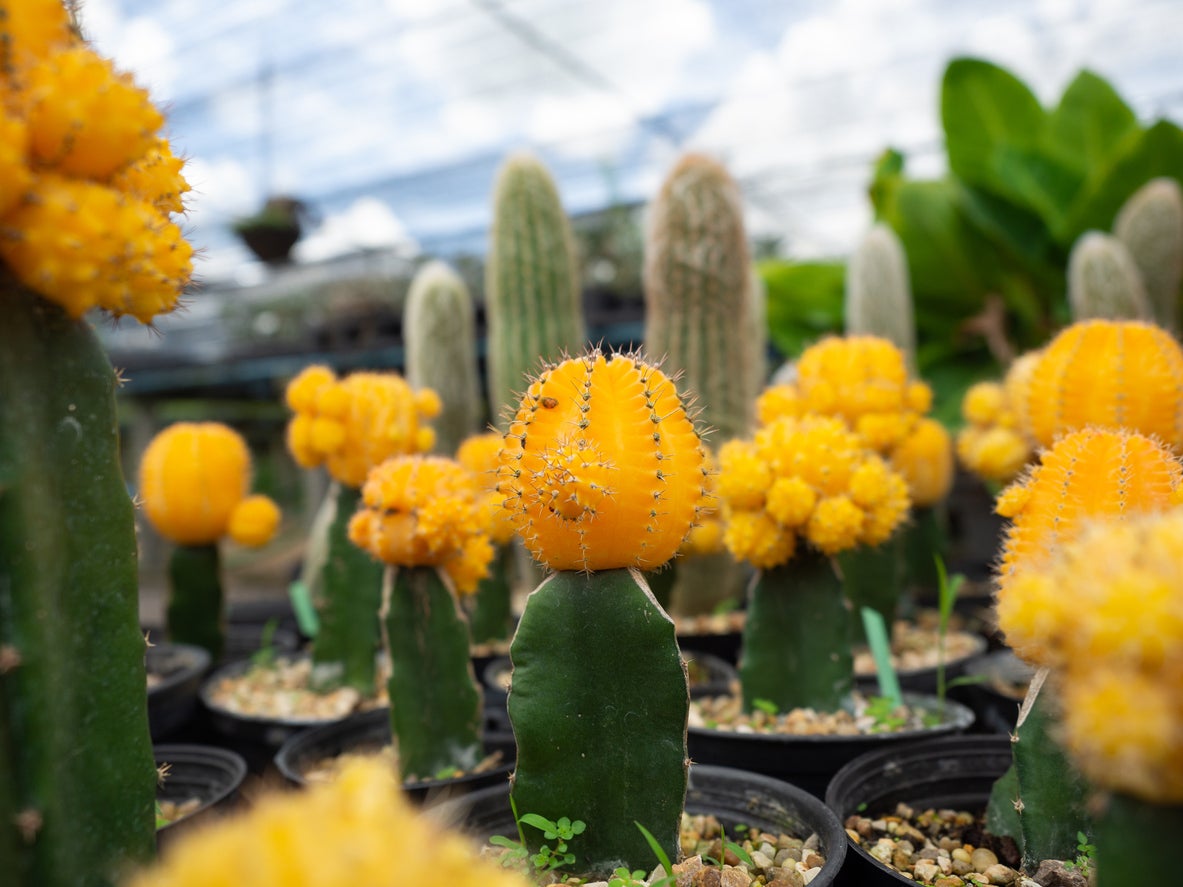
Turn to cacti for a striking, desert-style dish garden that’s remarkably easy to care for. There are so many varieties to choose from, all preferring little water and lots of light, but two that look great together are moon cactus (Gymnocalycium mihanovichii) and bunny ear (Opuntia microdasys). Plant in sandy soil with good drainage, and water minimally. Don’t let the lack of leaves turn you off—both of these cacti should flower prettily in spring and summer.
Dish Up Some Waffles.
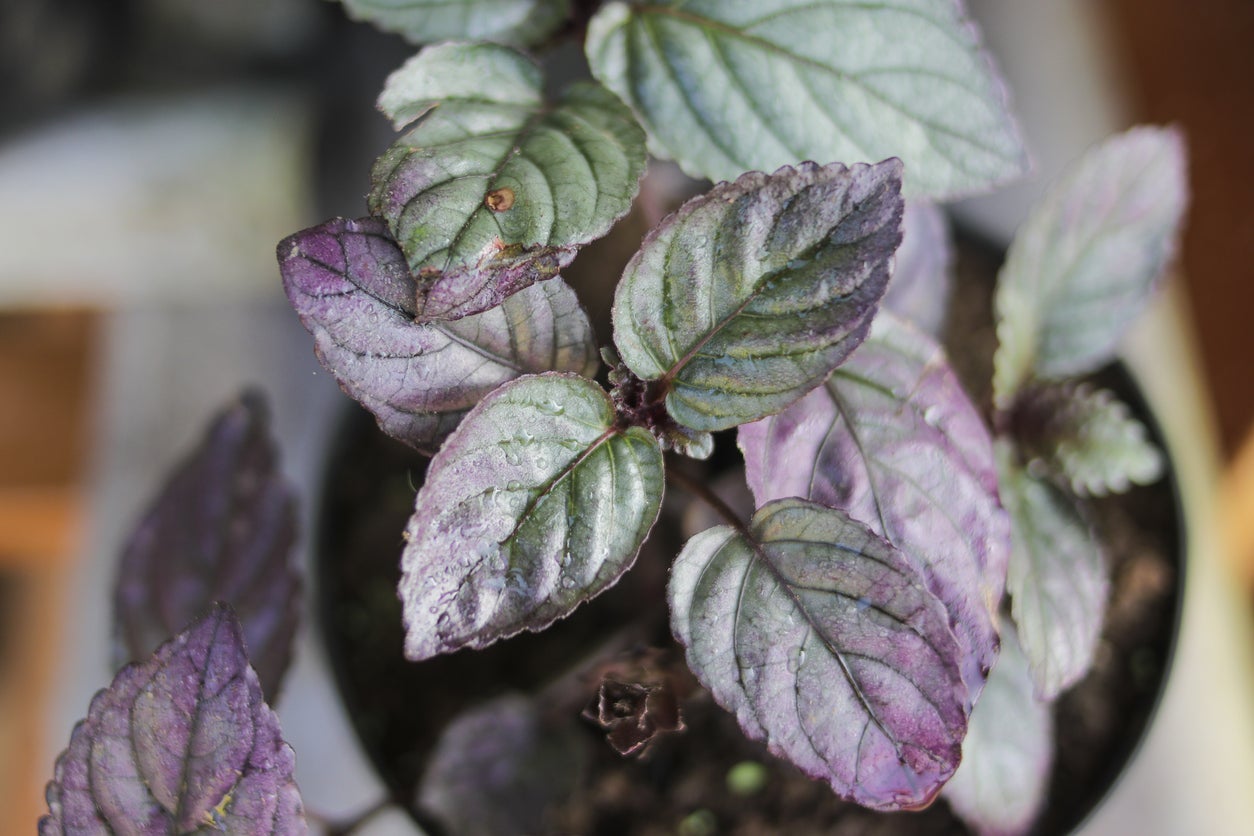
Hold the syrup! The purple waffle plant (Hemigraphis alternata) takes its name from its rich royal color and a texture that’s akin to a popular breakfast treat. A warmth and sun worshipper (bright indirect light is best), the purple waffle plant thrives in well-drained yet moist soil. Its compact look adds a lush quality to a dish garden.
Related: The Best Planters
Drape Some Grape Ivy.
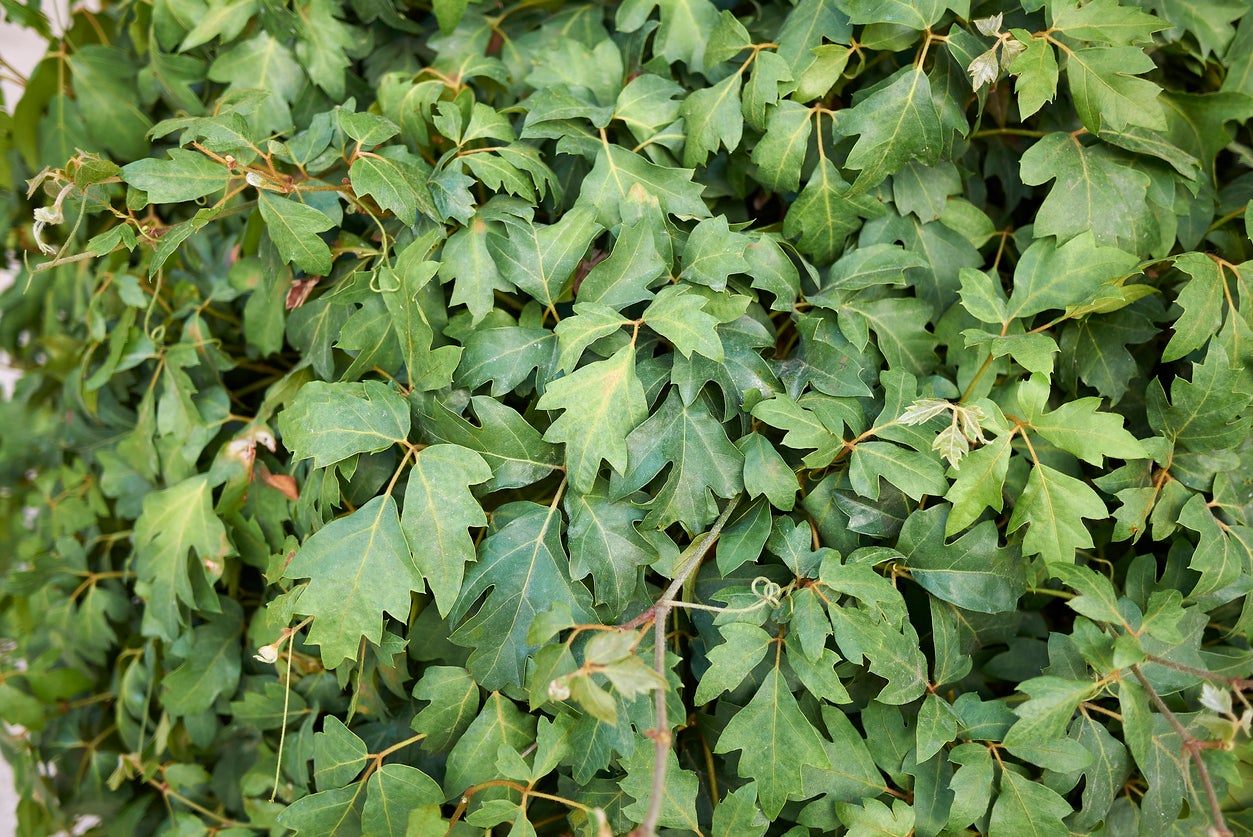
No sour grapes here! Thanks to its long stems, grape ivy (Cissus rhombifolia) tends to dangle. Plant some around the rim of a dish garden and encourage the stems to tumble over a pedestal. Though a tropical species, grape ivy appreciates low light and a moderate temperature between 68 and 82 degrees Fahrenheit. Feel free to prune—it will keep spread in check while nurturing healthy foliage—and don’t overwater, which can lead to mildew.
Enchant With Echeveria.
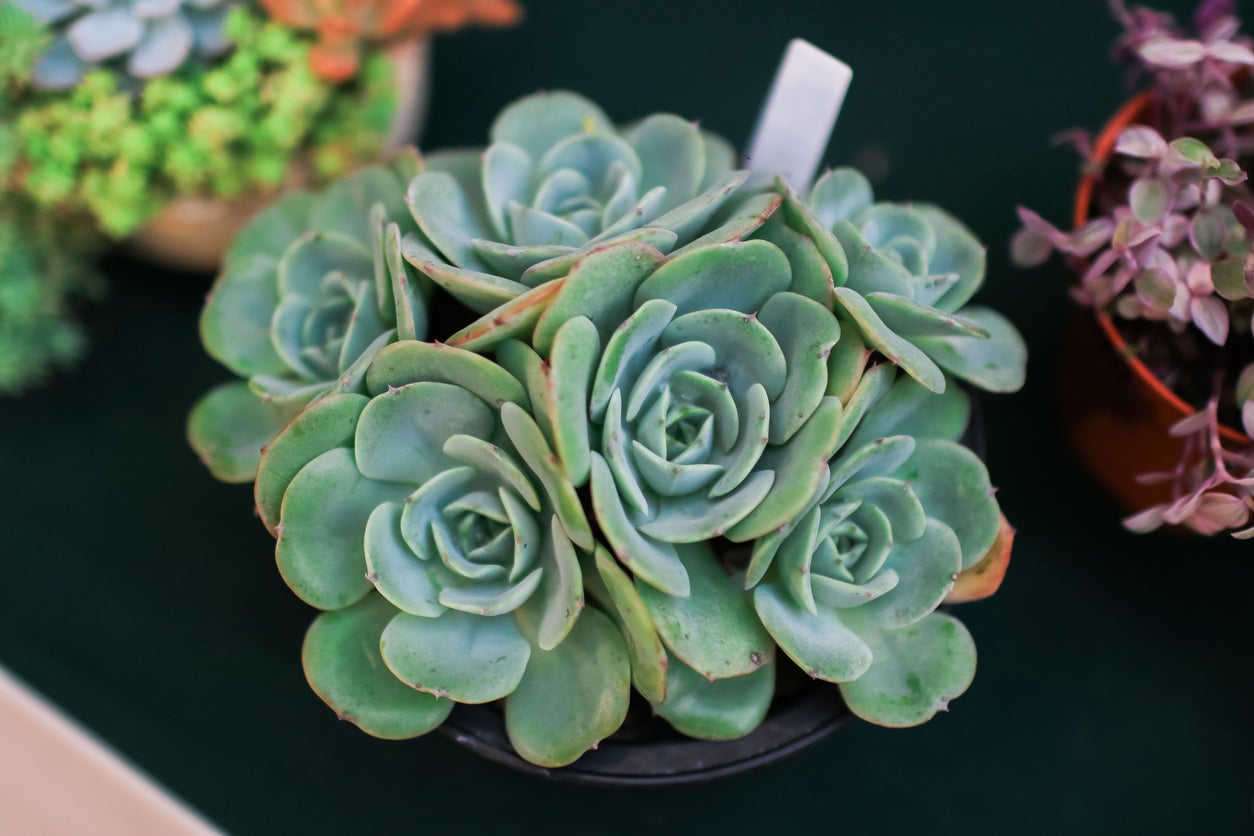
Succulents are superior candidates for a container garden because of their easy-care nature and exotic good looks. Echeveria (Echeveria elegans) comes in a wide range of shades and shapes, including cabbage-like ‘Blue Frills’ and the purple-tipped rosettes of ‘Neon Breakers’. Dish them out with other succulents and/or cacti in warm, bright spots, and water minimally.
Color In With Croton.
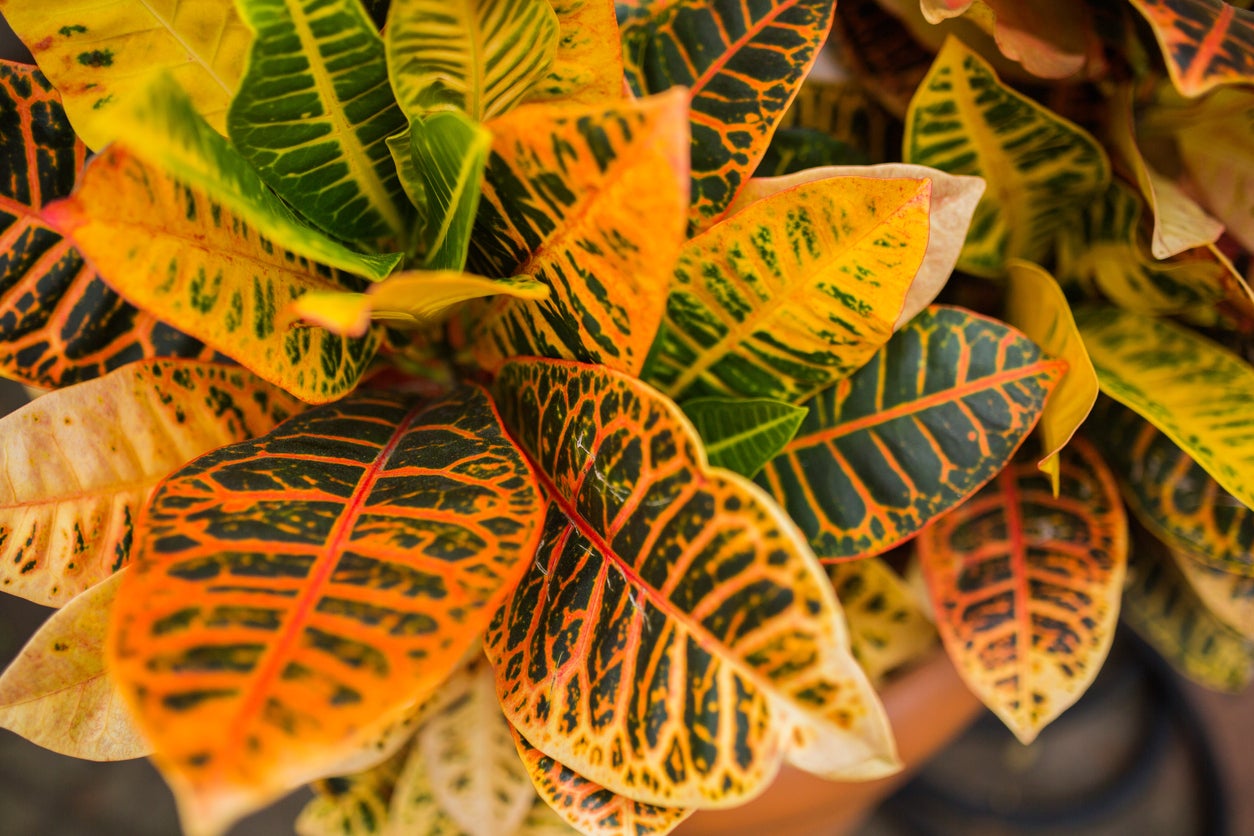
If your dish garden design is craving color, count on croton, which comes in many varieties and hues. Oakleaf croton (Codiaeum variegatum) is a particular favorite, with burgundy, red, green, orange, and yellow leaves. It thrives in good light and well-draining soil—take care not to drown it, as it may fail in standing water. Oakleaf croton can grow fairly tall, so perhaps center it in a large container garden.
Water Works With Duckweed
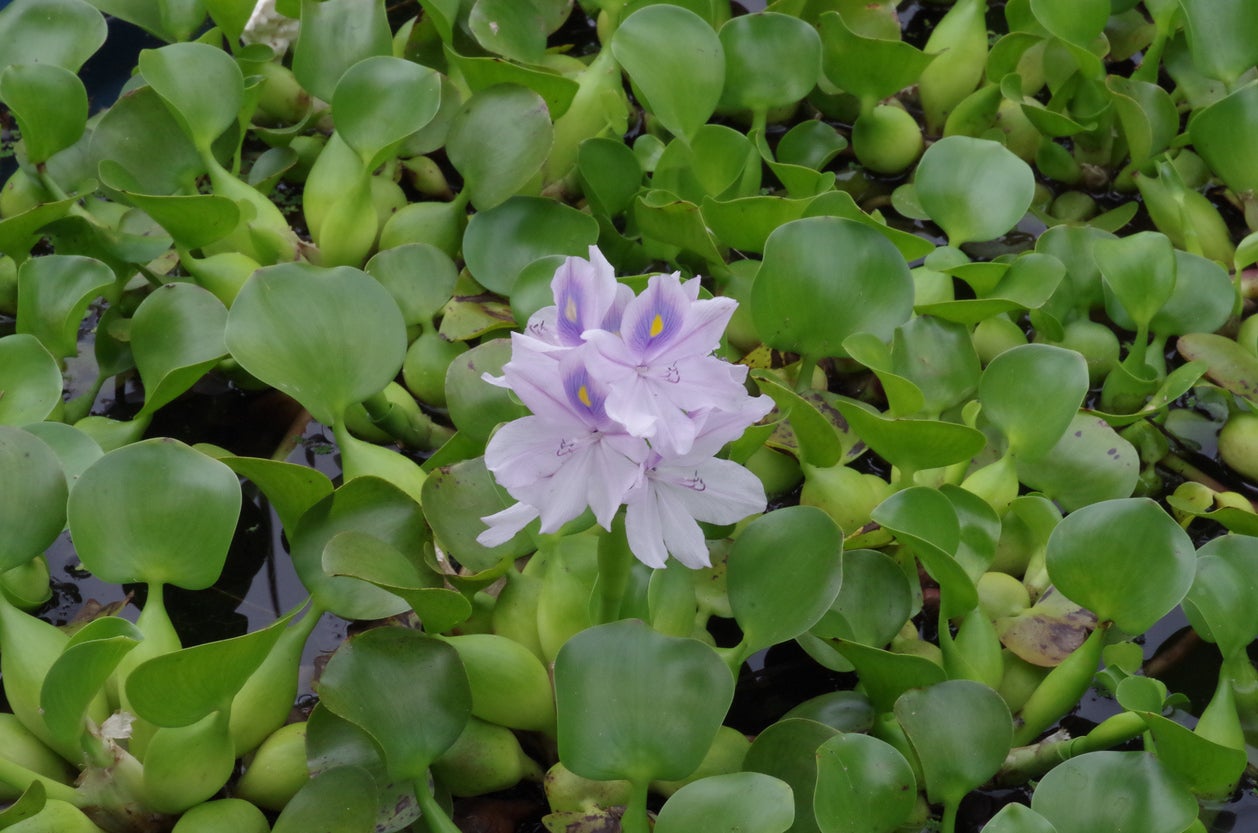
All you need to do for a water dish garden is arrange a few “floater plants” in a wide, shallow container—an especially pleasing sight on a patio or pool deck. The ideal base for such a project is duckweed (Lemna aequinoctialis), a tiny, fast-growing aquatic plant typically used as pond cover. Top it with some velvety green water lettuce (Pistia stratiotes) or water hyacinth (Eichhornia crassipes), which blooms beautifully in summer, to complete a striking ensemble, no soil required.
Fill In With Philodendron.
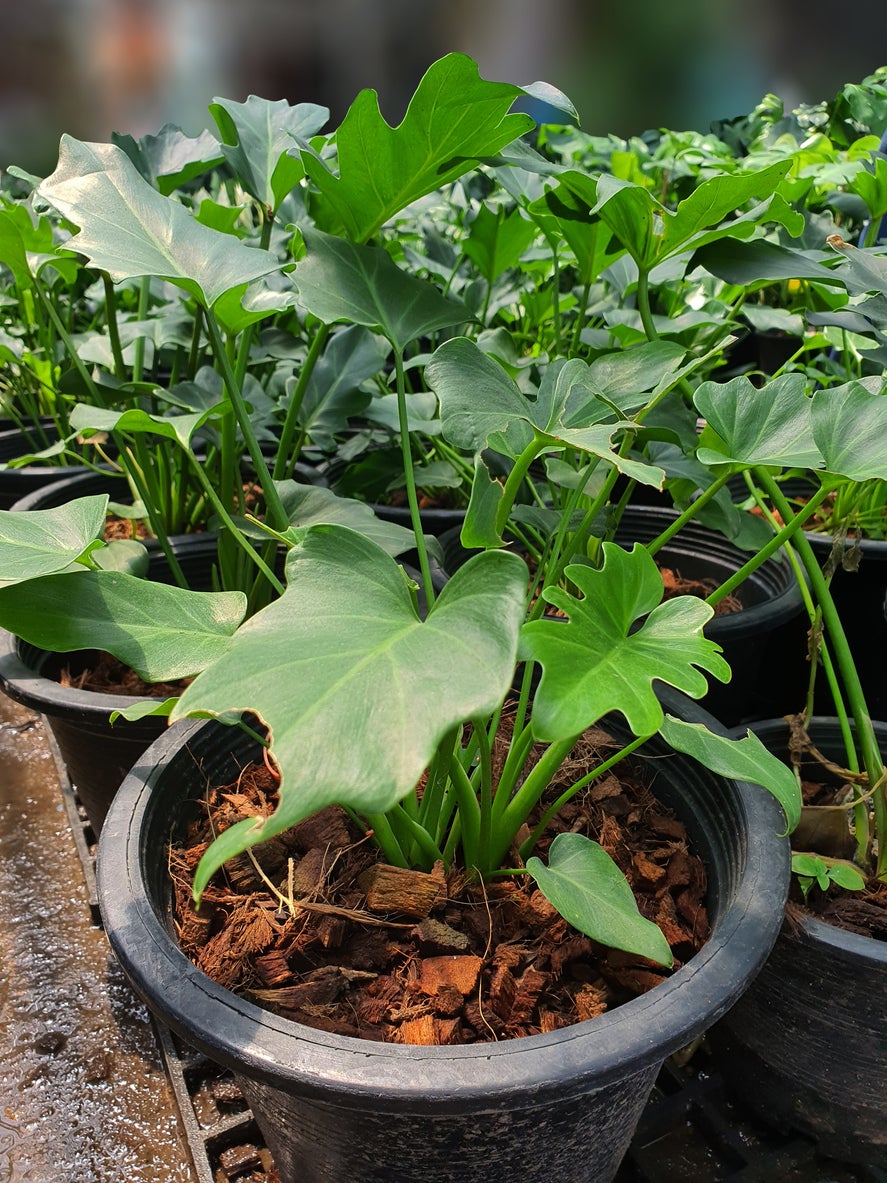
Many varieties of low-maintenance philodendron (Philodendron bipinnatifidum) feature blue-green or silver-gray foliage that won’t try to steal the show, making instead a lush dish garden backdrop. Choose from the upright and trailing types, but skip the climbers for a container. Looking for a more eye-catching plant? Consider Philodendron erubescens ‘Pink Princess’, prized for large coppery leaves displaying black, dark green, or pink variegation.
Put In a Panda Plant.
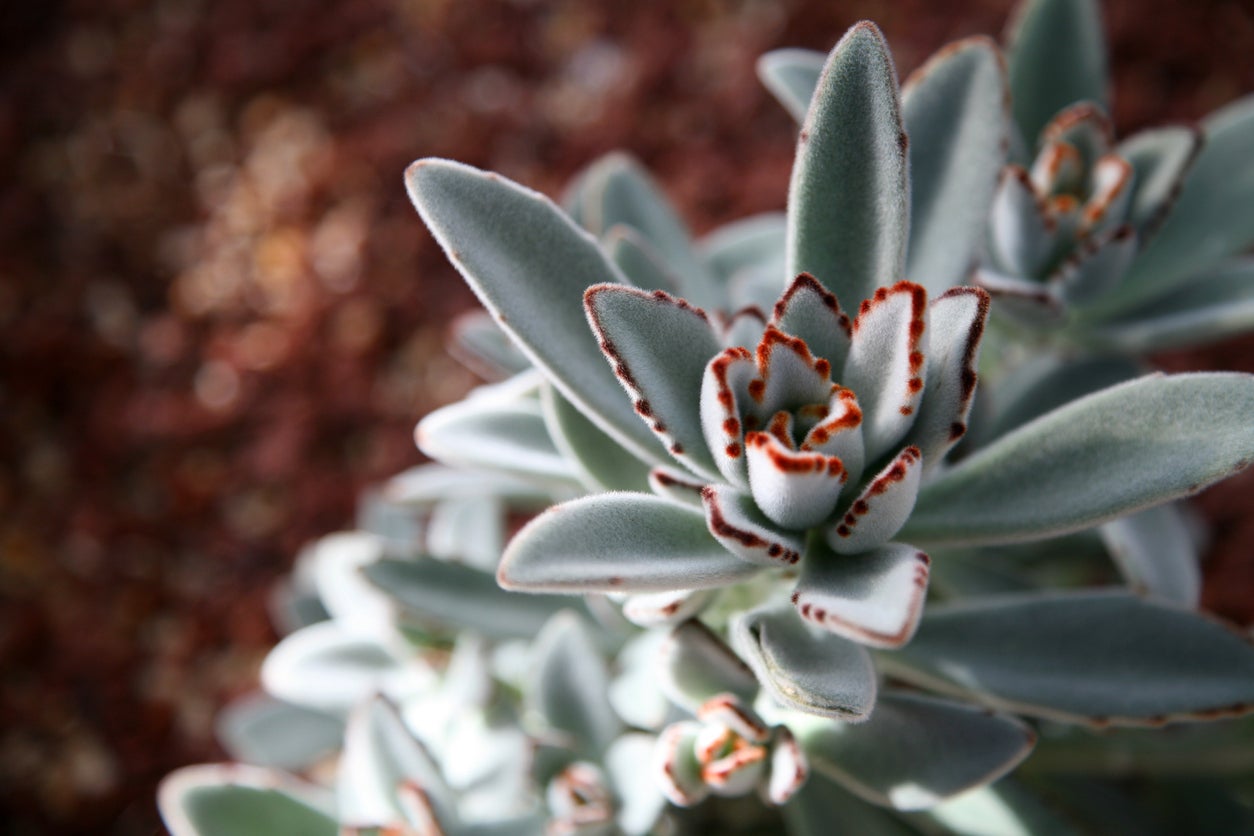
Nope, not bamboo! The panda plant (Kalanchoe tomentosa) is an appealing succulent with fuzzy pale green leaves tipped by chocolate-brown spots. It thrives in ample direct sun (consider a grow light if you can offer less than 6 hours daily), but aside from that it’s fairly durable, requiring little water and well-draining soil. Warning: Despite its other cute name—pussy ears—the panda plant is toxic to cats and dogs.
Show Off Schefflera.
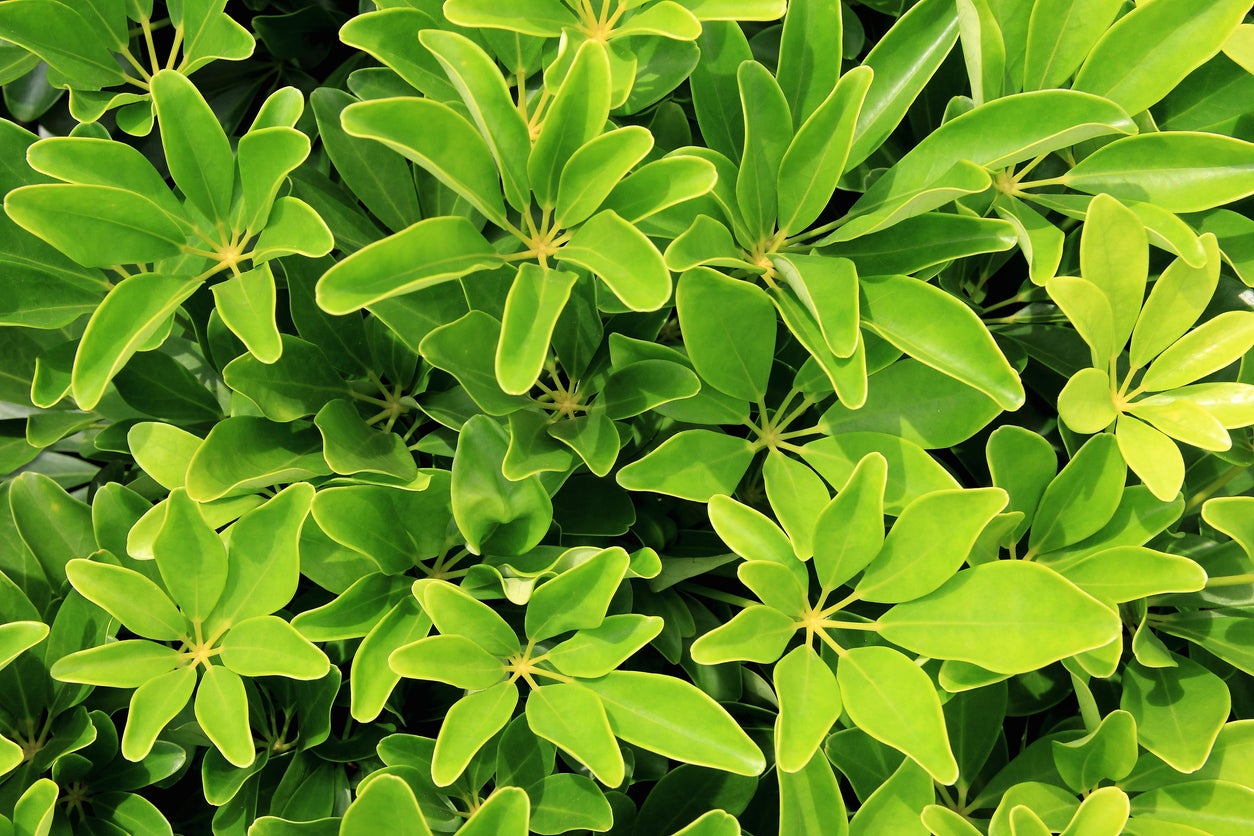
Welcome to the jungle! Schefflera is a genus of tropical plants with leaves that emerge from a center stalk in a form resembling an umbrella. It enjoys humid conditions, temperatures between 60 and 80 degrees Fahrenheit, and bright, indirect light. For dish gardens, dwarf schefflera (Schefflera arboricola) look striking over short-stem plants, such as pretty-colored rex begonias (Begonia rex-cultorum).
Give Peace Lily a Chance.
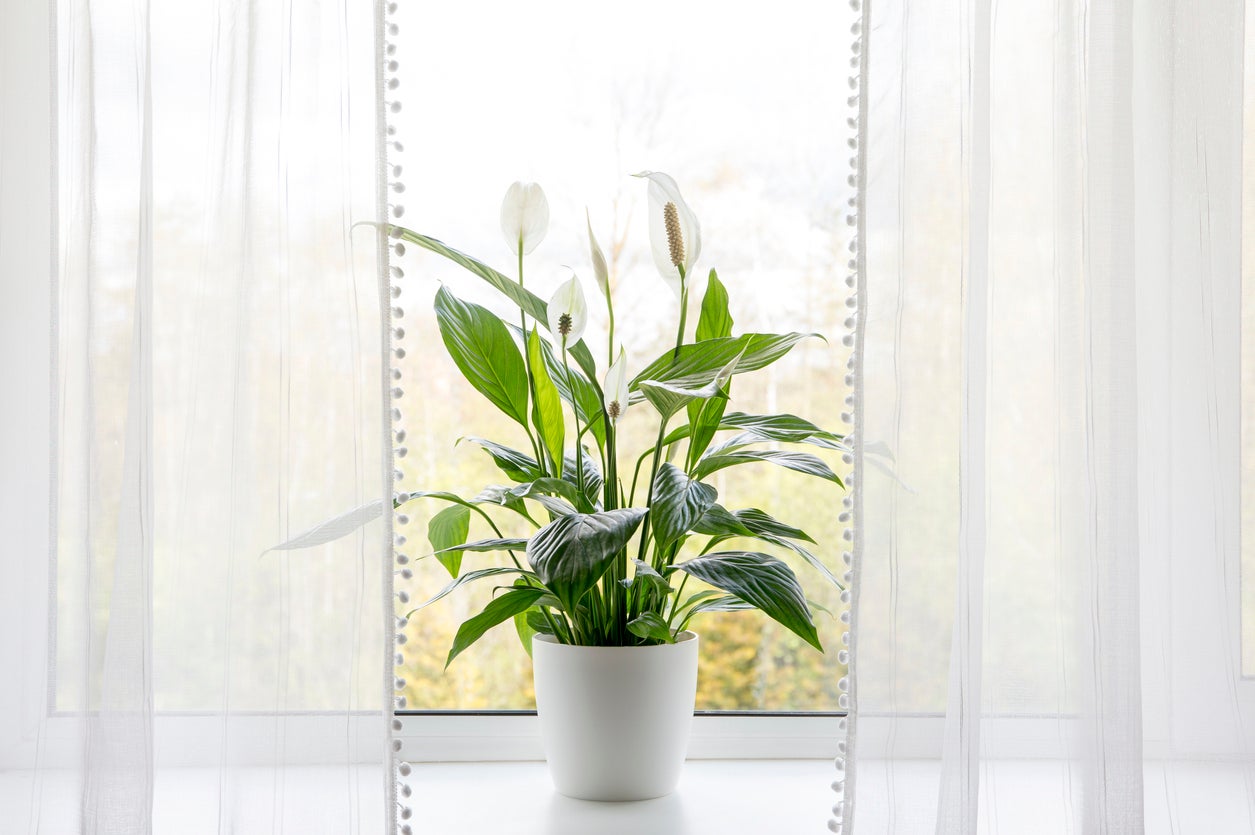
For vertical drama, put the spotlight on peace lily (Spathiphyllum wallisii), which features curvy bracts that typically bloom in spring. Each white flower will look striking against its own verdant foliage and blend beautifully with other plants as well. Also known as cobra plant, peace lily thrives without direct sun and requires watering deeply every 5 to 7 days. Caveat: This plant contains calcium oxalate, so keep it out of reach of curious pets and kids.
Blaze a Trail With Pothos.
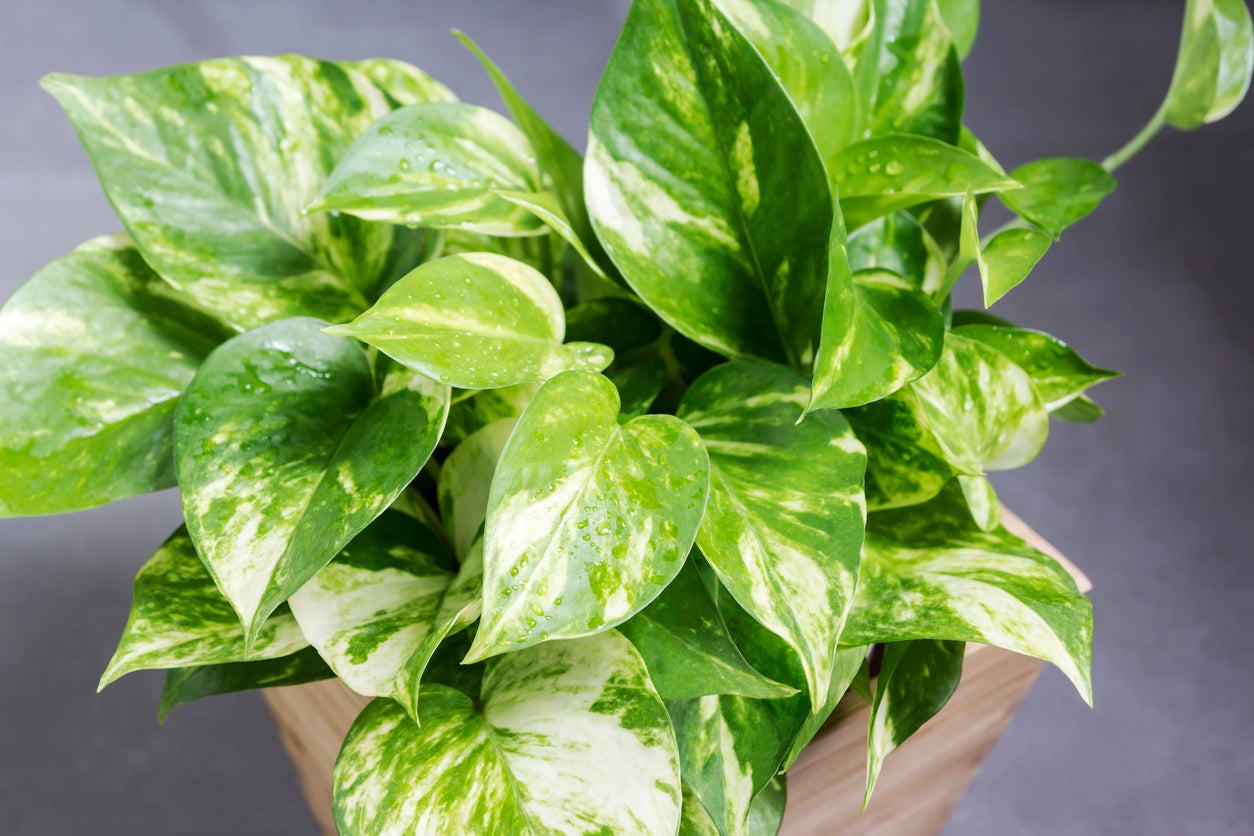
Despite the sinister nickname of devil’s ivy, pothos (Epipremnum aureum) is a simple, easy-care plant with heart-shaped green leaves often splashed with tones of yellow and white. A close cousin of the philodendron, pothos is one of those hard-to-kill plants perfect for newbies, as it can tolerate low light and drought. This vine can grow as long as Rapunzel’s hair, which makes it ideal planted close to the edge of a dish garden and allowed to trail dramatically.
Cater to Calathea
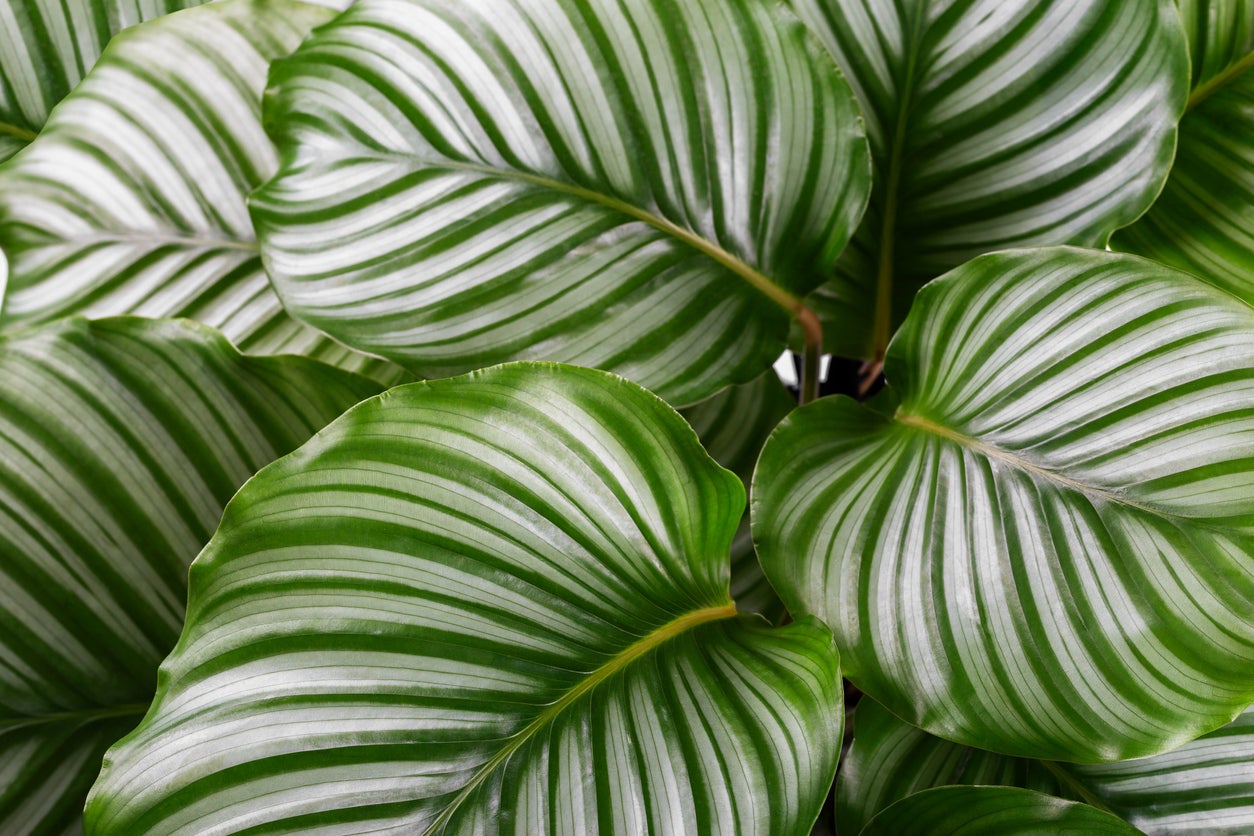
A lovely tropical plant with oblong leaves bearing bold stripes, calathea—also known proudly as the peacock plant—can be somewhat finicky. Give it the warm, moist air, filtered, indirect light, and moist soil it craves, and it will likely deliver as a star player in a tropical dish garden. Tip: Opt for filtered water or rainwater, as calathea can be sensitive to minerals often found in tap water.

Our Best Advice for Beginner Gardeners
We’ll help you set up your first garden—whether that’s a few pots on your patio, a raised bed, or an in-ground plot out back—and select the right plants for your soil and region.